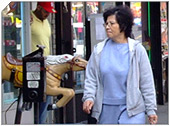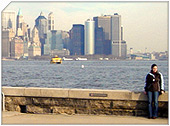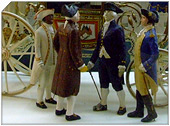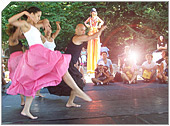Prospect Heights, Brooklyn, New York City
|
Getting Started
Index
NYC Neighborhoods
Manhattan
Brooklyn
Queens
Bronx
Staten Island
NYC Icons
Chrysler Building
Flatiron Building
Empire State Building
Safe NYC
NYPD
FDNY
NYC Weather
NYC Climate
NYC Weather Forecast
Winter Season
Spring Season
Summer Season
Fall Season
NYC History & Politics
New York City History
Tammany Hall and Politics
New York City Politicians
New York City Personalities
Culture of Gotham City
Culture of the city
Cultural diversity
City in popular culture
|
Prospect Heights is a neighborhood in the New York City borough of Brooklyn, bounded by Flatbush Avenue to the west, Atlantic Avenue to the north, Eastern Parkway to the south, and, traditionally, Washington Avenue to the east, though some people believe the eastern boundary is Bedford Avenue. In its northern section are the Atlantic Yards.
Compared to other Brooklyn neighborhoods, Prospect Heights is relatively small and is notable for its cultural diversity as well as its tree-lined streets. Prospect Heights is rapidly changing demographically, and its shifts are exemplified by a mixture of abandoned buildings and newly-built luxury condos.
Geography
Along the southern boundary, Eastern Parkway, from Grand Army Plaza to Washington Avenue is reminiscent of Manhattan's Fifth Avenue "Museum Mile". Immense, opulent buildings line the north side of the parkway, and the south side features the Brooklyn Public Library, Mount Prospect Park (not to be confused with Prospect Park), the Brooklyn Botanic Garden and the recently renovated Brooklyn Museum. To its west lies Park Slope, Clinton Hill to the north, Prospect Park to the south, and to its east Crown Heights.
The interior portion of the neighborhood consists mostly of brownstone-style residential buildings, some built as early as 1890, although some blocks, such as Lincoln and St. Johns Place between Underhill and Washington Avenues, include multi-unit apartment buildings. A number of new condominium complexes are under construction in many parts of the neighborhood.
Defunct bakeries and factory spaces line Pacific Street from Vanderbilt Avenue to Carlton Avenue, and some have recently been renovated and converted into lofts; still others have recently been purchased by developer Bruce Ratner in anticipation of his Atlantic Yards Project. His company Forest City Ratner has planned a controversial development on top of the neighborhood, the plans for which would include a basketball arena and luxury housing. An upscale residential building designed by the architect Richard Meier is currently under construction in the former parking lot of a nearby synagogue at Grand Army Plaza.
The controversy over the boundaries of Prospect Heights and the surrounding area can be traced back to a letter to the editor of the Brooklyn Eagle written on March 14, 1889 and published on March 17, 1889 . Entitled "SLOPE HEIGHTS OR HILL" it begins:
"It is amusing to see the attempts made to fix upon a name for the rapidly growing part of Brooklyn near Prospect Park, bounded by Flatbush, Fifth and Ninth avenues, Some call it Park Slope, some Park Hill Side, some Prospect Heights and others Prospect Hill"...
|
New York City Search
Quick NYC
|
|
|
 How safe is New York City?
How safe is New York City? Contrary to popular belief, the City consistantly ranks in the top ten safest large cities in the United States. The NYPD is the largest municipal police force in the world and has it's own Movie/TV Unit. |

New York has a humid continental climate resulting from prevailing wind patterns that bring cool air from the interior of the North American continent. New York winters are typically cold with moderate snowfall.  New York Weather Forecast New York Weather Forecast |

New York's two key demographic features are its density and diversity. The New York City metropolitan area is home to the largest Jewish community outside Israel. It is also home to nearly a quarter of the nation's South Asians, and the largest African American community of any city in the country.  Ethnic composition Ethnic composition |

New York Newspapers
 
|



 New York Weather Forecast
New York Weather Forecast
 Ethnic composition
Ethnic composition


















